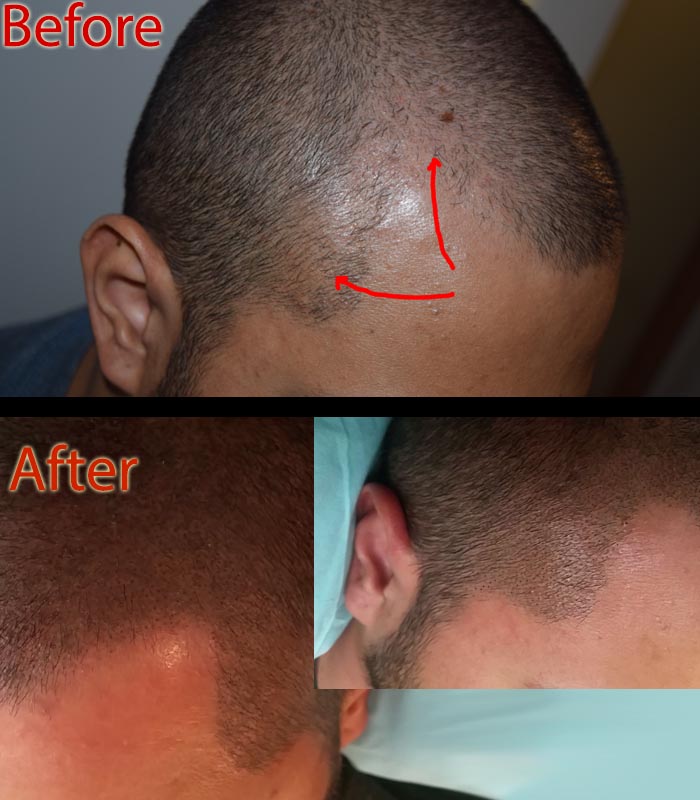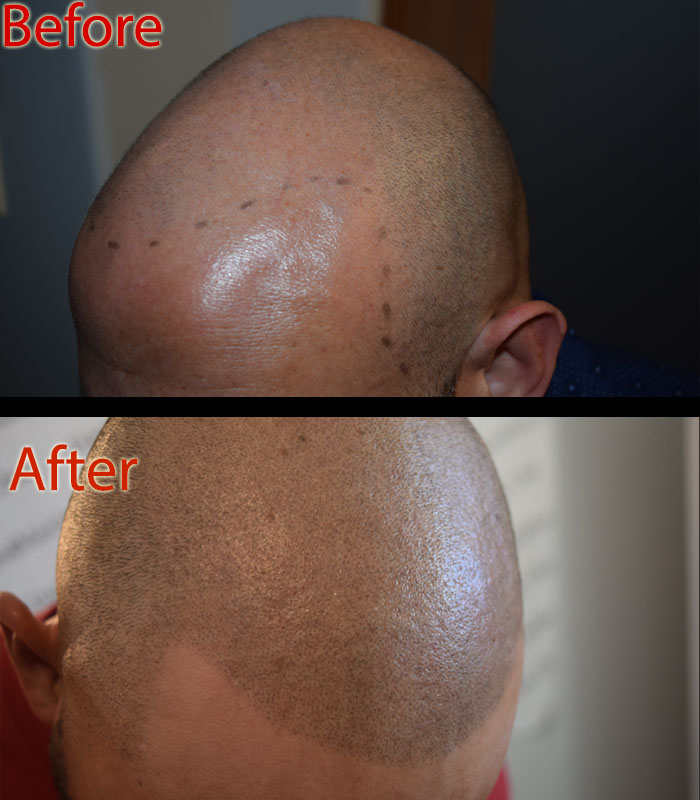Scalp micropigmentation for hair loss can achieve a natural look when done correctly and with the right hair type. When it comes to achieving a natural look with SMP, there are a few concerns and considerations.
Expertise Matters for Scalp Micropigmentation for Hair Loss
Mimicking Hair Follicles
Skilled technicians use a technique called pointillism. This process involves applying tiny dots of pigment in different shades that match your existing hair color. These dots mimic the look of individual hair follicles, creating a realistic illusion of hair growth.
But you can get high-quality SMP results only if a skilled scalp artist performs the job. A tattoo artist is untrained in scalp micropigmentation and cannot do justice to the craft.
Matching Hair Color and Scalp Tone
A crucial aspect is color matching. An experienced technician will carefully select pigments that blend seamlessly with your natural hair color and scalp tone. This ensures the pigment doesn’t appear flat or unnatural against your skin.
Hairstyle Considerations
Scalp micropigmentation for hair loss works best with shorter hairstyles – buzz cuts, fades, or short-cropped styles. Longer hair can sometimes reveal the pigment dots if not styled carefully. That’s why you need a skilled scalp technician who knows the craft well and can carefully add density and definition to thinning hair.
Factors Affecting Naturalness
A few things can influence how well SMP blends with natural hair:
Hair Type
Coarse, textured hair blends better than very fine hair. But an SMP expert can make a difference to the end result in both cases, ensuring scalp micropigmentation is a pleasant experience for those with fine hair as well.
Hair Loss Pattern
Extensive baldness might require a denser application, whereas early stages of hair loss or thinning hair may be a little easier to do.
Skills of technician
The skills of SMP artist can be the difference between a successful scalp micropigmentation outcome and an unsuccessful one. That’s why, have a thorough consultation with the technician before undergoing SMP. Discuss your hair loss pattern, desired outcome, and see examples of their work.
SMP Facts
It’s important to remember that SMP is a cosmetic procedure. It doesn’t stimulate hair growth, so it won’t prevent further hair loss. Besides, certain activities like excessive sweating or sun exposure can shorten the lifespan of the pigment.
If you’re considering SMP, research reputable clinics and technicians in your area. By choosing a skilled professional and understanding the limitations, you can achieve a natural-looking, confidence-boosting solution for hair loss.
The DermiMatch Advantage
When looking for the right hands for scalp micropigmentation for hair loss, trust the scalp experts in Arizona at DermiMatch Clinic. They have been practicing SMP for years and understand different scalp types and conditions. Team SMP is happy to discuss your hair loss problem and suggest a solution that works on your hair type and looks natural.
Schedule a consultation with Arizona SMP practitioners at DermiMatch Clinic. They are happy to help you find a solution to your hair loss woes.


